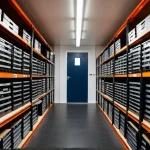Immediate Steps to Improve Home Energy Efficiency
Taking practical energy-saving upgrades can significantly reduce your utility bills and environmental impact. One of the most effective easy efficiency measures is sealing air leaks around doors, windows, and other openings. This prevents warm or cool air from escaping, maintaining your home’s temperature and reducing the workload on your heating and cooling systems. Adding insulation in key areas like attics and walls further enhances this effect, keeping your home comfortable year-round.
Switching to LED lighting is another quick home energy tip with immediate benefits. LEDs consume up to 75% less energy than incandescent bulbs and last much longer, offering both savings and convenience. Replacing all household bulbs with LEDs can cut lighting costs noticeably while improving light quality.
Topic to read : How Do Sustainable Homes Influence Modern Living Trends in the UK?
Adjusting thermostat settings can also yield quick savings. Setting your thermostat a few degrees lower in winter and higher in summer, or using a programmable thermostat, helps maintain optimal savings effortlessly. This strategy reduces energy consumption without sacrificing comfort.
Implementing these practical energy-saving upgrades doesn’t require major renovations, making them accessible first steps toward a more energy-efficient home.
Also to discover : What are the best ways to organize a UK home’s storage space?
Upgrading Home Systems for Maximum Impact
When aiming to enhance home comfort and reduce utility expenses, focusing on energy-efficient appliances is crucial. Replacing outdated refrigerators, washers, and dryers with models boasting Energy Star ratings can significantly cut electricity use while maintaining performance. This change alone can yield noticeable savings on monthly bills.
Another key area for improvement is the HVAC upgrade. Older heating, ventilation, and air conditioning units often operate inefficiently, leading to higher energy consumption. Opting for a modern, high-efficiency system can improve home heating and cooling efficiency markedly. These newer units employ advanced technology, reducing wasted energy while maintaining consistent indoor temperatures.
Complementing equipment upgrades with smart thermostats and programmable controls enhances control over your HVAC system. These devices allow precise scheduling and temperature adjustments, adapting to your lifestyle and further minimizing unnecessary energy usage. By aligning HVAC performance with your daily demands, these upgrades create a more comfortable and cost-effective environment.
Integrating energy-efficient appliances, a comprehensive HVAC upgrade, and intelligent control systems offers a powerful combination. This approach not only improves home comfort but also significantly advances your home’s overall energy efficiency.
Enhancing the Building Envelope
Improving your home’s insulation is key to maintaining comfortable indoor temperatures and reducing energy bills. Upgrading wall, roof, and floor insulation helps minimize heat loss in winter and heat gain in summer. Using materials with high R-values ensures better thermal resistance, directly impacting your home’s energy efficiency.
Investing in energy-efficient windows, such as double or triple-glazed models, further reduces heat transfer. These windows limit drafts and maintain indoor comfort by creating insulating air layers between panes. By sealing unwanted air leaks with proper home weatherization techniques, you not only increase comfort but also lower heating and cooling costs.
Draft-proofing doors and windows by applying weatherstripping or caulking gaps is a simple, cost-effective method. It prevents cold air infiltration and warm air from escaping, enhancing overall energy savings. These combined strategies create a tighter, more efficient building envelope that directly benefits your home’s climate control and energy consumption.
Integrating Renewable Energy Solutions
Choosing residential renewable options like solar panels is a practical step toward greener home energy systems. Installing solar photovoltaic (PV) systems converts sunlight directly into electricity, reducing dependence on fossil fuels while lowering monthly energy bills. These systems can be customized to fit different roof sizes and energy needs, making them accessible for most households.
Beyond PV panels, homeowners can explore solar water heating. This method uses solar thermal collectors to heat water, providing an efficient alternative to electric or gas water heaters. Small-scale wind turbines offer another renewable option for properties with sufficient wind exposure, generating electricity that supplements solar or grid power.
Financial incentives significantly influence the appeal of green home energy systems. Many regions offer rebates and tax credits to offset the initial costs of installing solar panels or wind turbines. The resulting return on investment often includes energy savings over time, increased property value, and reduced carbon footprints, making the switch to renewable options financially and environmentally worthwhile.
Cost-Effectiveness and DIY vs. Professional Approaches
Understanding energy efficiency cost is crucial when planning home upgrades. While some improvements have a higher up-front price, their impact on reducing energy bills often results in a strong home improvement ROI over time. Homeowners can benefit from distinguishing between projects suitable for DIY and those requiring professional expertise.
DIY energy upgrades such as sealing windows, adding weatherstripping, or installing programmable thermostats offer affordable ways to reduce energy consumption without involving significant expenses. These tasks typically demand basic tools and knowledge, making them accessible and cost-effective for most homeowners.
However, more complex retrofits—like installing solar panels, upgrading insulation, or replacing HVAC systems—often require hiring professionals for energy retrofits. Experienced contractors bring certifications and technical know-how that ensure compliance with safety codes and optimize system performance. Consulting professionals also avoids costly mistakes, increasing long-term savings.
In summary, weighing the balance between initial investment and potential savings is key. Start with manageable DIY projects to reduce costs and escalate to professional services when specialized skills and guarantees are necessary. This approach maximizes energy efficiency cost benefits while safeguarding your home improvement investment.

